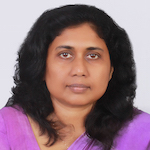On Medical Education In Sri Lanka

The admission criteria for medical education should be at least 2B and C. At present UGC minimum qualification adopted in 2011 for medicine 2C S. Before 2011 it was 3S.
Implement a merit based admission criteria for state universities (75% merit, 25% marginalised district quota system) or 100% merit. At present 40% merit, 55% district quota, 5% marginalized districts (since 1970, prior to 1970 admission to universities 100% merit)1. For the past 45 years this non merit base admission had caused lead to the problem we face today. This happened nearly 30 years ago and many young lives were lost. Have we learned lessons from the history?
Addition to A/L results an aptitude test, plus added marks for exceptional talents in sports or arts or music or innovation skills should be considered. These aptitude tests should test the Emotional quotient (EQ) and Spiritual quotient (SQ). EQ and SQ are higher order thinking than intelligent quotient (IQ)2.
An independent accreditation council to accredit all universities (public and private) should be established. Every 2 -3 years, compulsory accreditation to be done and standards checked. All state and private higher education (HE) institutions should be accredited and standards maintained. At present many private HE institutes and some state HE institutions do not obtain accreditation from a national or an international accreditation council.
If a non-state medical school is to be established it should be a non-profit making trust. Private- public partnership for non state medical schools with hospitals similar to Sri Jayewardenepura Teaching Hospital (SJTH) will be a feasible option. This will open the door for a majority of Sri Lankan citizens with an affordable health care. Since the inception of SJTH more than 30 years ago there had been no other private-public partnered hospital in the country.
Before establishing a non-state medical school, the medical ordinance should be amended to include the criteria for recognition by SLMC and expected standards of a non-state medical school. This should be similar to any state medical faculty.
National policy for education should be formulated for the primary, secondary and tertiary education. This should have been done 25 years ago soon after 87-89 students unrest.
Problems I see in Sri Lankan medical education at present:
* Many students with higher marks from Colombo, Kandy and Gampaha unable to obtain medicine due to district quota. Also from above districts dental, Vetenary science Z score is higher than some district’s medical entry cut off.
* Having more than 1000 Foreign qualified graduates unable to pass ERPM. I see two main issues for the failure rate to be so high when the exams and the examiners are in par with Final MBBS.
a) Minimum entry criteria of 2Cs S (2011) before that 3 S given by UGC.
b) Sub-standard overseas universities approved by SLMC without supervision.
* Also within state universities there are many students failing to qualify at exams, who are wasting years in the university. Maximum number of attempts are given at an exam, failing which a student is asked to leave the study course. The facts on failures can be easily obtained from each faculty. The reasons for failure of medical students are mostly the admission criteria, in few cases the language barrier and social or health issues.

